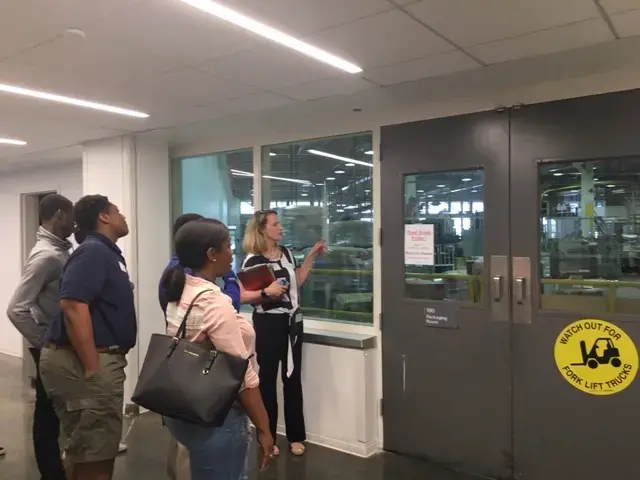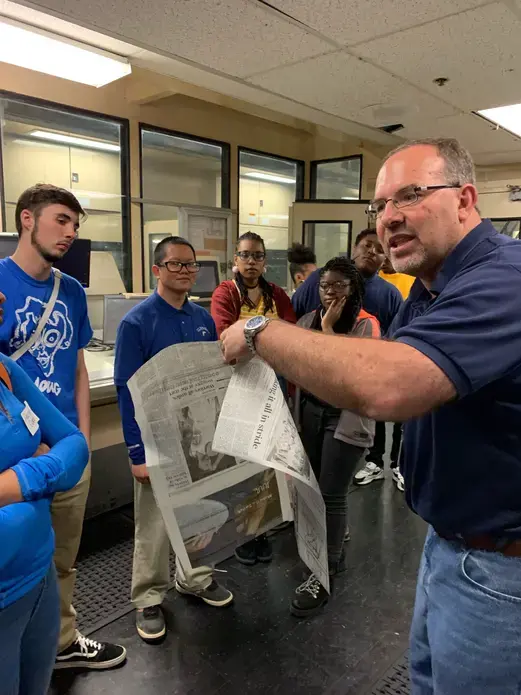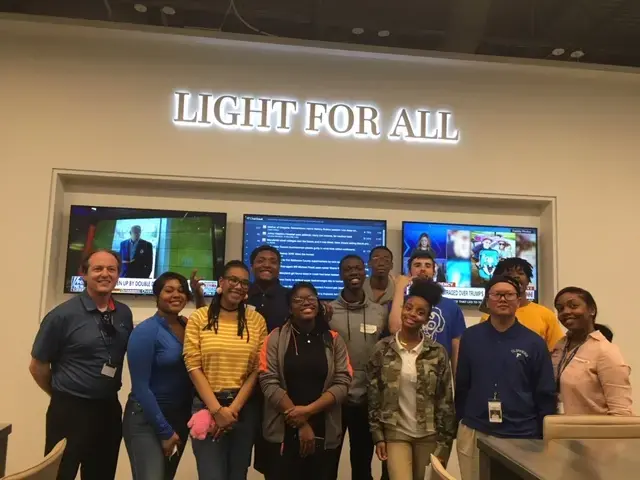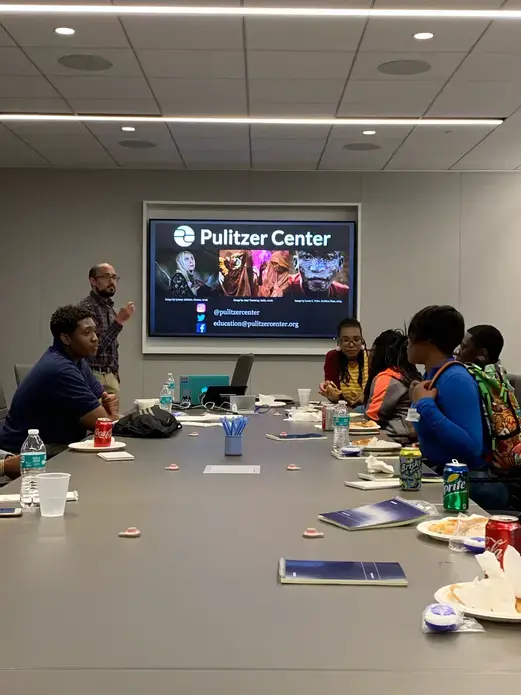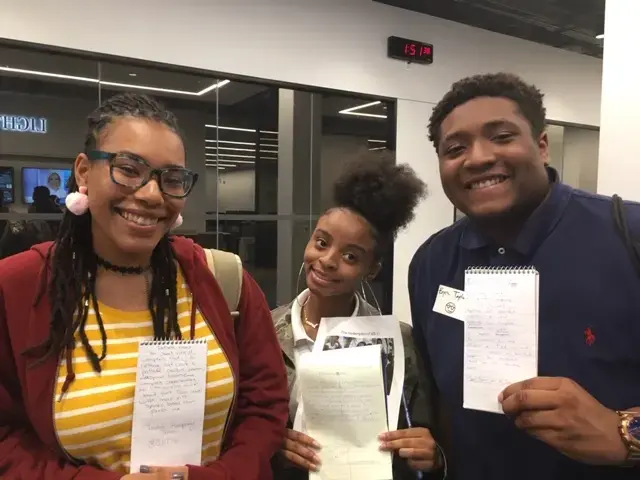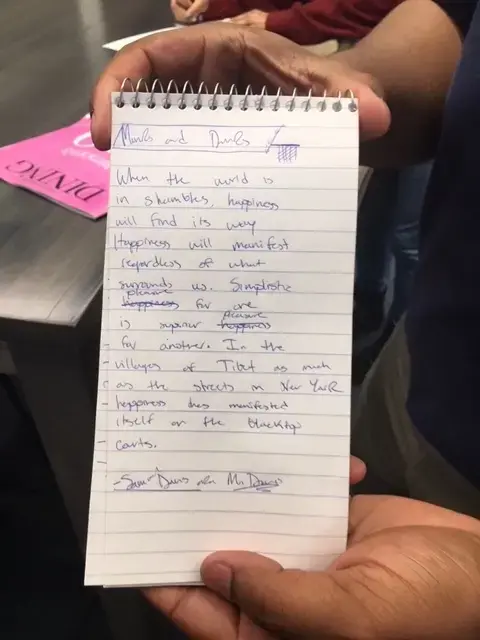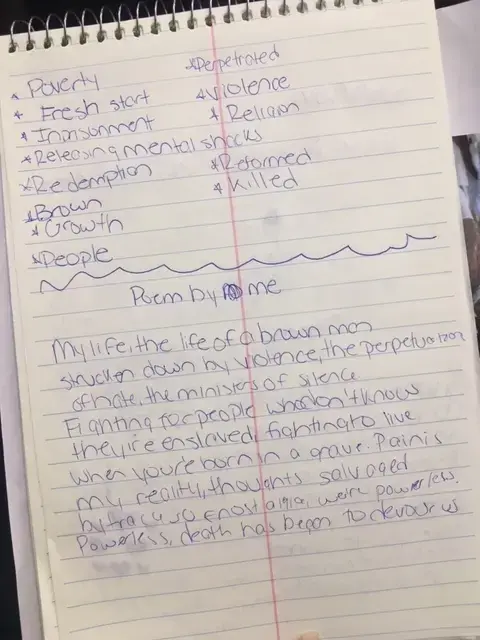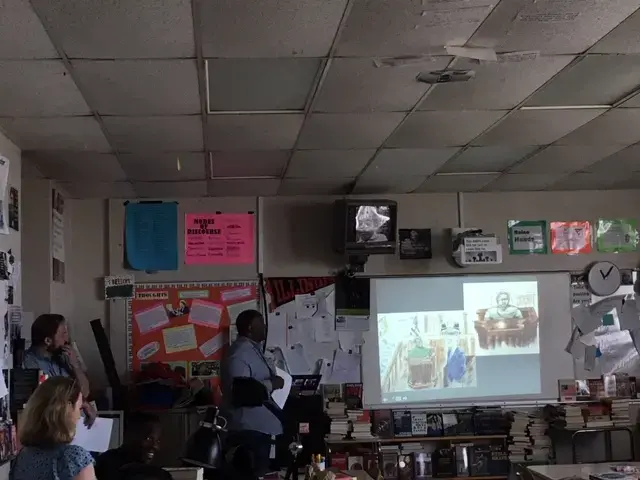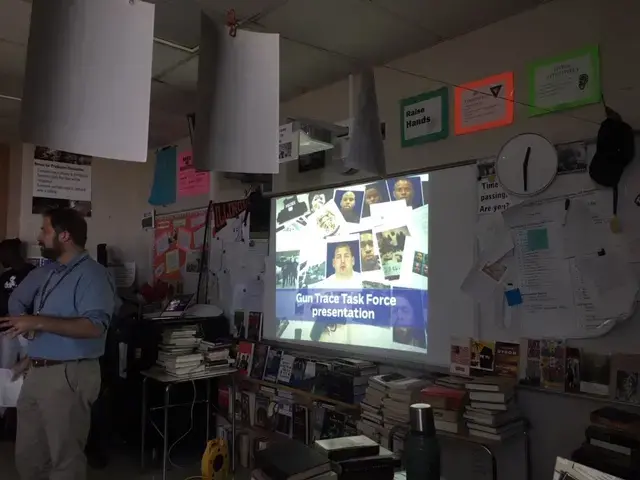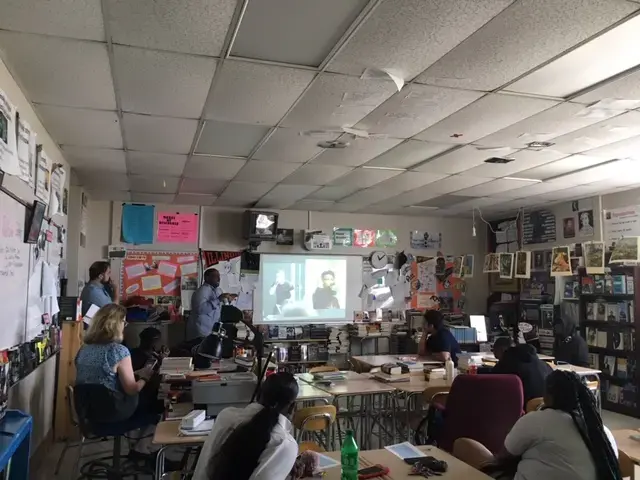
This spring, the Pulitzer Center education team partnered with the Baltimore Sun to lead presentations and workshops for Baltimore public school students that explore how news is reported and how underreported news stories connect to issues students see in their own communities. The partnership is part of the Center’s Bringing Stories Home initiative, which provides funding for underreported stories by news outlets outside of the U.S.'s most populous cities and then connects those stories with the outlets' communities through education and outreach programs.
A Newsroom Tour and Hands-on Journalism Workshop for the BCPS Student Media Team
On May 17, 2019, high school students from the Baltimore City Public School (BCPS) Student Media Team arrived at the Sun for a day-long exploration of the publication’s mission and operations. The students, who work with BCPS as media interns and report stories on local schools for publication on the BCPS website, started their day with an introduction by Sun editor Diana Sugg. Sugg described the Sun’s founding and her experience reporting on health and education as a staff reporter. She then led a discussion with the Student Media Team about the subjects they would be interested in covering if they were journalists. Many were interested in local politics and government, but others hoped to specialize in food, entertainment, or style. Noting students’ interests, Sugg then revealed that she would be pairing students with staff journalists later in the afternoon who cover the issues students expressed interest in. Students quietly celebrated as they were then ushered into the rooms where Sun newspapers are printed.
For nearly an hour, director of production John Frahm guided students in a hands-on exploration of the printing room. As they moved past the enormous reams of paper and printing machines, students discussed the role that news outlets play in highlighting underrepresented voices and critically investigating issues that could affect their readers. They also examined how the Sun has adapted its publication strategy in the face of a reduced print subscriptions, and how advanced technology has changed the way that newspapers are printed.
Following the tour, students regrouped with Pulitzer Center’s senior education manager Fareed Mostoufi in the Sun’s boardroom for lunch and a poetry workshop. Mostoufi led students in a discussion about how they find their news, and how the Sun’s work fits into a larger community of news outlets around the world that highlight underreported stories. Sugg and Mostoufi introduced students to the Center-supported reporting on the Baltimore police, then guided students in an exploration of reporting from over a dozen Center-supported journalists. Students identified stories that interested them, and ultimately developed and shared original poems inspired by their chosen stories. At the conclusion of the workshop, students devised questions about how journalists identify stories. They were then introduced to the Sun’s managing editor Sam Davis for a discussion about how he and the newsroom staff develop content for the Sun.
Students concluded the day by breaking into small groups and meeting with editors who cover topics that interested them. After a final group picture in front of the newsroom, students ultimately departed with business cards and notebooks in hand.
Frederick Douglass High School Students Explore the Process of Investigating Baltimore Police Corruption
On Tuesday, June 4, 2019, Baltimore Sun investigative reporter Justin Fenton and visual journalist Kevin Richardson connected with over 40 AP English students at Frederick Douglass High School to describe their process investigating corruption and illegal activity by members of the Baltimore Police Department. The story was supported by the Pulitzer Center.
Center staff began the visit by guiding students in a reflection about how they gather their news, what news stories they find themselves exploring, and what questions they have about how news is reported. Fenton and Richardson then described how they became staff reporters at the Sun and why they ultimately decided to spend months investigating the story, “Cops and Robbers.” Fenton explained how he gathered evidence for the story by connecting with community members and seeking government records. Richardson described how he developed videos that would help readers engage more deeply with Fenton’s reporting. Students examined a video Richardson created to visualize how police illegally planted a gun at the site of a car accident. Fenton then described how he gathered the interviews, court documents and camera footage used in the film. Students launched quickly into questions about how the journalists felt while reporting the story, and how they think the story could hold the police accountable for their actions. Students also asked how journalists identify their stories, and how they deal with hearing difficult stories from people who are affected by the issues they cover.
“It informed me a lot,” one student wrote in a post-presentation survey. “I know things I didn’t know before,” added another student. One student wrote that they liked “how honest and open the presenter was about being a journalist.” A particularly engaged student said that she realized by the end of the presentation that she should be a journalist because she loves talking to people and asking questions.
As students filed out of the classroom, Baltimore Sun editor Diana Sugg emerged from the back of the classroom and offered her card to the student who said she was interested in being a journalist. Sugg offered to connect the student with staff at the Sun for a tour and an informational interview about the process of becoming a staff reporter.
Pulitzer Center’s Bringing Stories Home outreach initiatives encourage both students and newsroom professionals to think differently about how the news is made and who it is made for. Students speak with a variety of professionals about pressing underreported stories and expand their view of what careers in journalism might look like. Journalists also have the unique opportunity to hear how students think about journalism, an audience that they may not have previously kept in mind. Through these local partnerships, both parties learn to engage in local news through a new lens while building relationships between news professionals and the communities they cover.
The Pulitzer Center will continue to collaborate with the Baltimore Sun and nearly a dozen other publications in fall 2019 to connect communities with journalists and editors from their local news outlets. For more information, contact Pulitzer Center’s education department by emailing [email protected]





